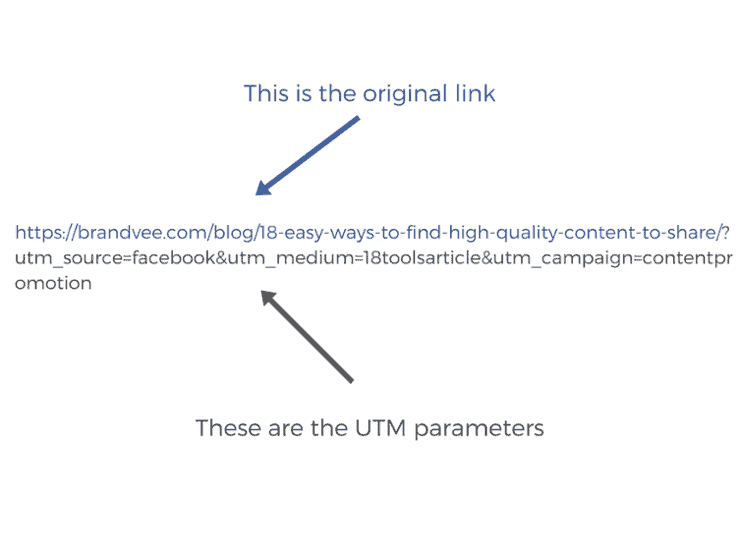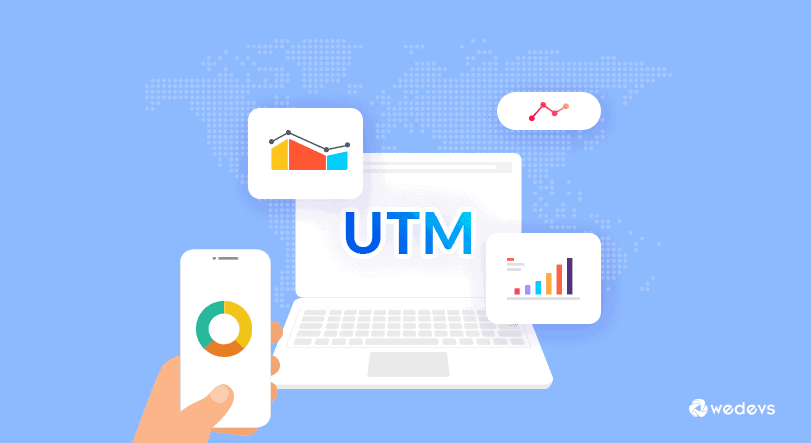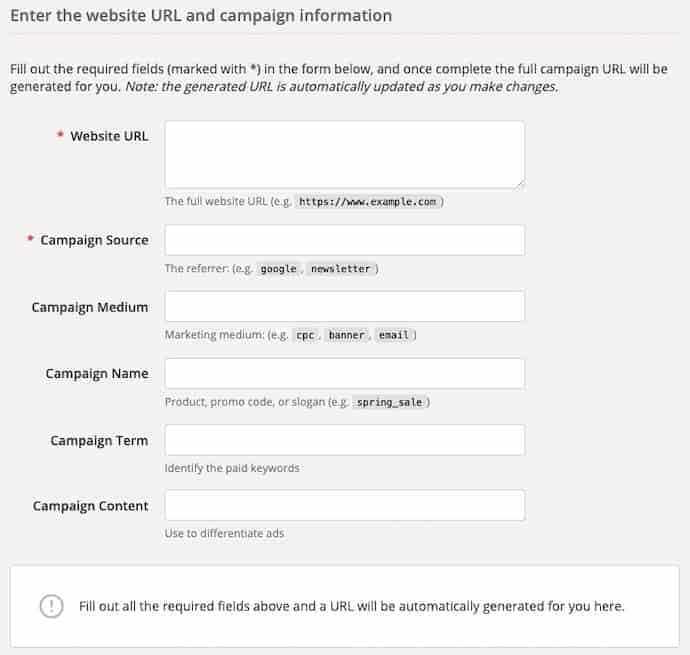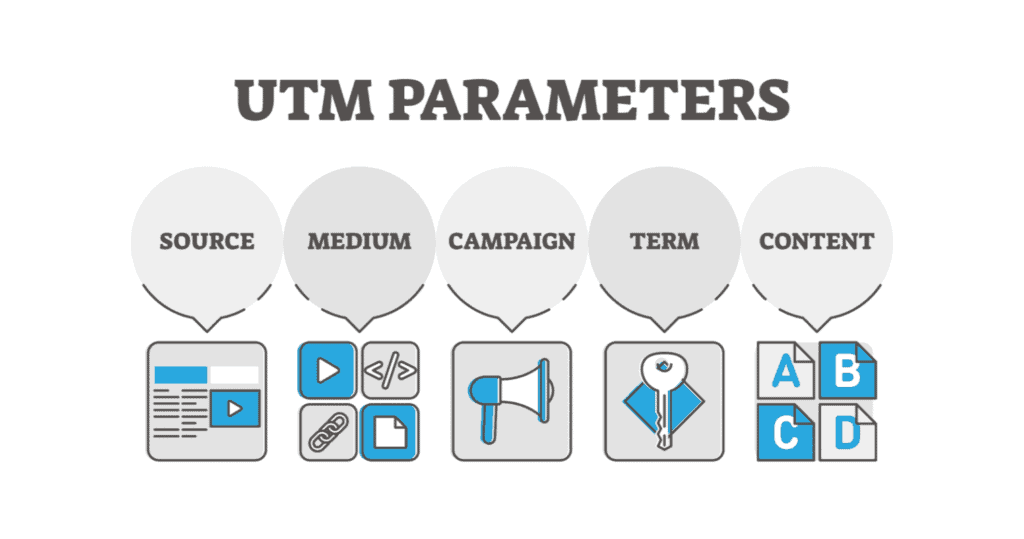Urchin Tracking Module. Scary term, I know. But it’s actually a very simple concept. Let’s start at the basics.
Have you ever wondered what the gibberish in a URL (website) link means? Look at the picture below:

A lot of links have words, numbers and text links at the end that don’t make sense to us – but they are actually there for a reason!
Before an in depth explanation, I’d like to answer a few very basic questions.
What are UTM parameters?
UTM parameters are like tags. You attach them to a specific link or URL. Just like how we attach small virtual pocket files that store user history.
Why are they added?
To track that particular URL that it is added to. In order for the tracking to start, all one has to do is click on the URL.
A detailed explanation:
You’ve heard of Google Analytics, yes?
If you haven’t, here’s what it is – Google Analytics is a service provided to users by Google that tracks, analyses and reports on the visitors, traffic and other parameters of any given website.
It’s a free analytical tool that helps websites get in depth knowledge on website activity – session duration, pages per session, bounce rate, demographics and personal URL and IDs of individuals etc.
Basically it’s a way of tracking activity on the website. But where do UTM parameters come into play here?
Think of it this way – there are a lot of ways that Google Analytics and other measuring tools track your data (from cookies to fingerprinting to beacons).
UTM parameters are also another, more advanced tracking option that are available to you, an online marketer.
Whenever a user clicks on a URL which has an attached UTM, then the information is sent to Google Analytics for tracking!
With the help of UTMs you can get a good understanding of how visitors interact with your website.
They are little tracking packages that we add to our URLs to see where different traffic is coming from.
The UTM parameter helps the market know the origin of the visitor – where did they come from? Was it social? Email? Messaging?
It also tells us about the engagement of a visitor with any recent campaign that you have launched.

How do you add UTMs to your URL?
Yes, Google Analytics has broken it down and made it simple for us marketers to use. All you need to do is go to Google Analytics’ help centre and fill up a form. This is how the form looks like:

There are five main terms in this form that you need to be aware of before filling it in:
- Campaign Source – this tells you where the visitors are coming from. Your email newsletter, twitter etc.
- Campaign Medium – this is the medium through which the visitor arrives at your website. Can be through Pay Per Click ads, QR codes or affiliates etc.
- Campaign Name – identifies your campaign name; which campaign is the promotion associated with?
- Campaign Term – this is used to track keywords during a campaign. It also identifies paid keywords and organic keywords.
- Campaign Content – this identifies which part of your ad or promotion the user clicked on – the text, link or picture?
Notes: each of the above mentioned terms are all different types of UTM tags.
- UTM parameters start from a question mark at the end of the URL.
- Any tag that is being added, starts with it’s name. For eg: “utm_source” or “utm_content”.
- Each UTM is separated by an ampersand (&).

But why are UTM parameters important?
The five terms that we discussed above are like 5 different tags that you can add to your URL.
All five of them, albeit different, give valuable information on which of your promotional efforts are bringing visitors to your website.
This information helps you realise which campaigns are doing well and which are not. And this is exactly the kind of data that is needed for us to optimize our content.
If we know where the content is working best (Email, Facebook, Instagram etc), then we can redirect our efforts into the medium that is giving us maximum output.
In doing so, we make sure that we get back at least an equivalent or more than what we gave… i.e. our return on investment (ROI) should be high and not low.
What are some methods you can follow for tagging URLs?
- Keep it simple: UTMs are complicated as it is, no need to go and make it more complex than necessary. You can even have a naming guide that helps your team to figure out how exactly to phrase the words and elements that will come in your UTM. Some easy steps to keep in mind:
- Use dashes instead of underscores. Saves time and unwanted errors.
- Keep everything in the lowercase. Random upper and lower case text links are hard to remember.
- Keep the URL descriptive – briefly describe what it is. It should be simple and brief.
- Non redundant – don’t keep unnecessary words in the link as it will confuse you.
- Non repetitive – don’t repeat words that are already there in the URL into the UTM.
- Keep it organised: there’s no doubt that things will start to get complicated during campaigns and you’ll have to sort through large amounts of data as it is. Don’t add UTMs into that mix. Keep them organised in a spreadsheet. Record all the links that have been tagged so that it helps you and your marketing team stay on top of it.
- Link your data with your CRM : Customer Relationship Management (CRM) deals with helping businesses improve existing customer relations and acquire new customers. If you link your tracing data with your CRM strategies then it will help you know your consumer’s likes, dislikes and behavior which in turn will help you optimize and calibrate content. Thus you will get an idea about how and what content/ads are affecting the bottom line – you relationship with the consumer.
Conclusion
In summary, if you want to know where your traffic comes from and which parts of your campaign are generating the most traffic, then you need to indulge in the power of UTM parameters.
A bonus point to take home: obviously building URLs and UTM parameters manually is a very tedious task.
An easier way to build your URLs is to use Google’s URL builder.
This gives you another easy step in the direction of creating, tracking and making revenue out of custom campaigns.
Although it takes a bit of time to get used to the idea of building the long, seemingly nonsensical string of codes and words,
now we know what they are and why we need them.
Once you get a hang of it, it’ll be your best friend. So go ahead and start tracking!

